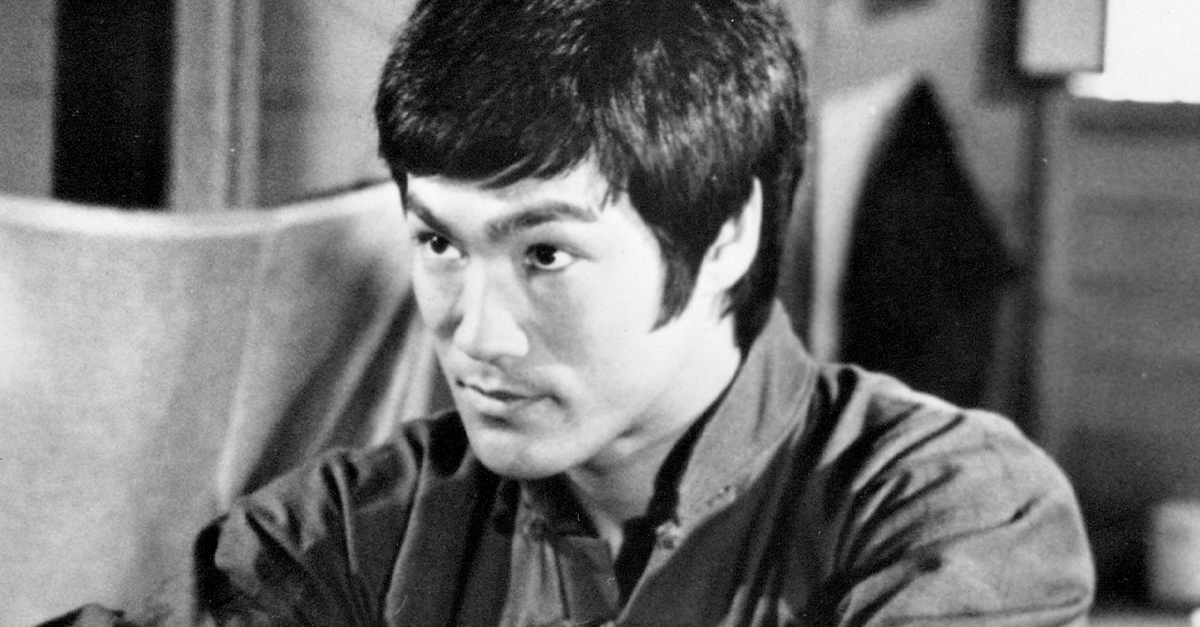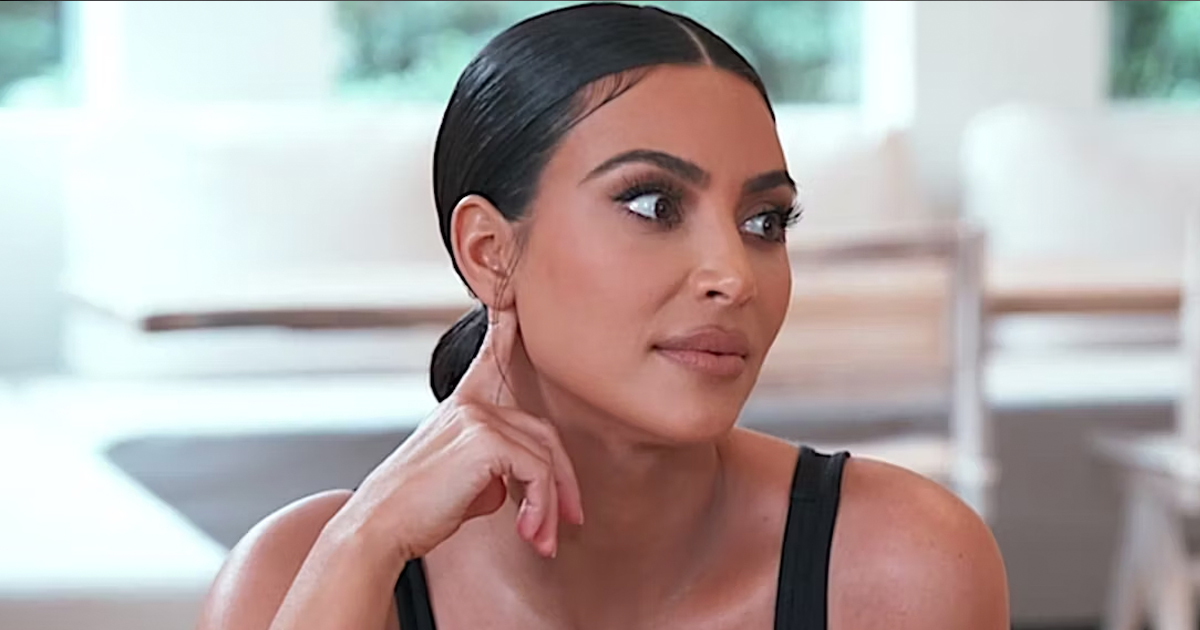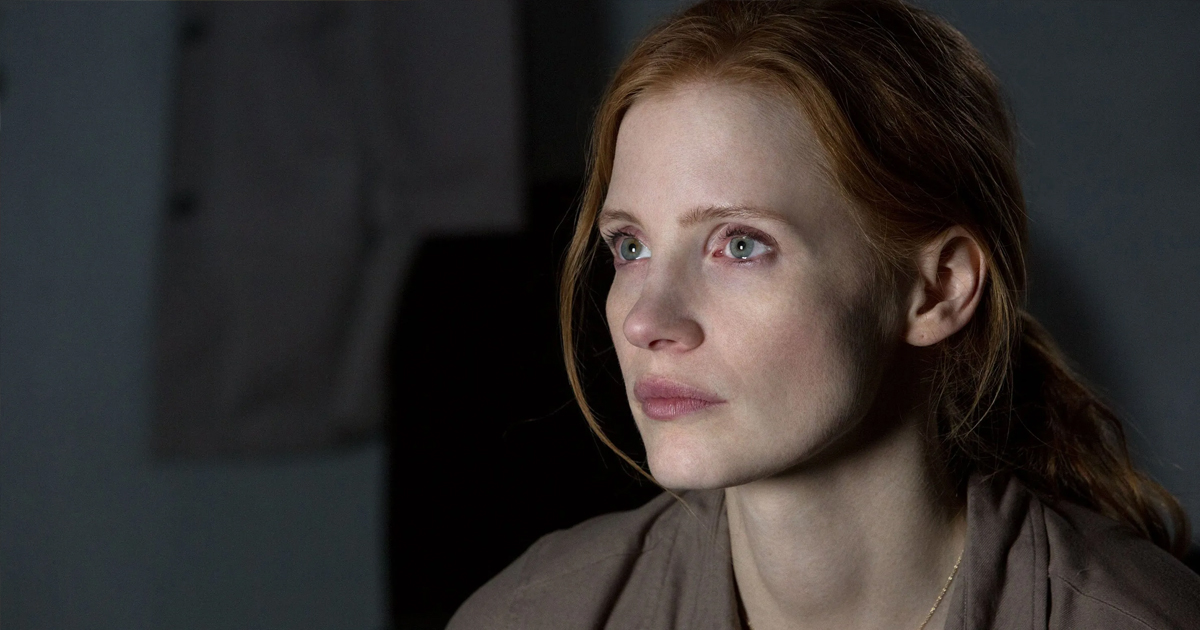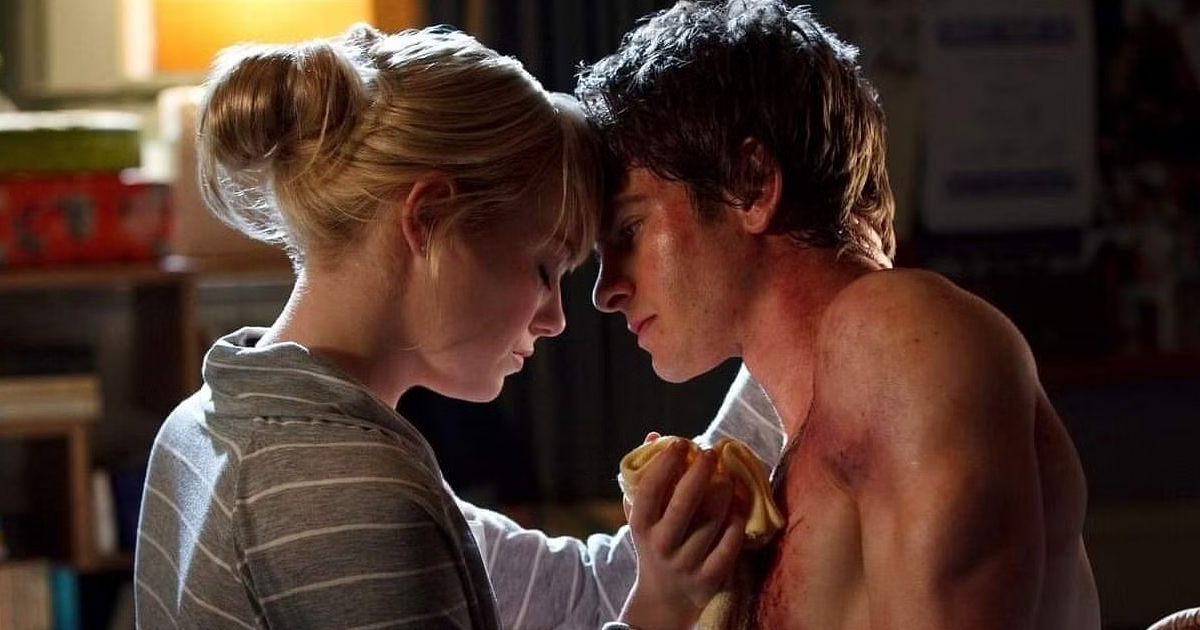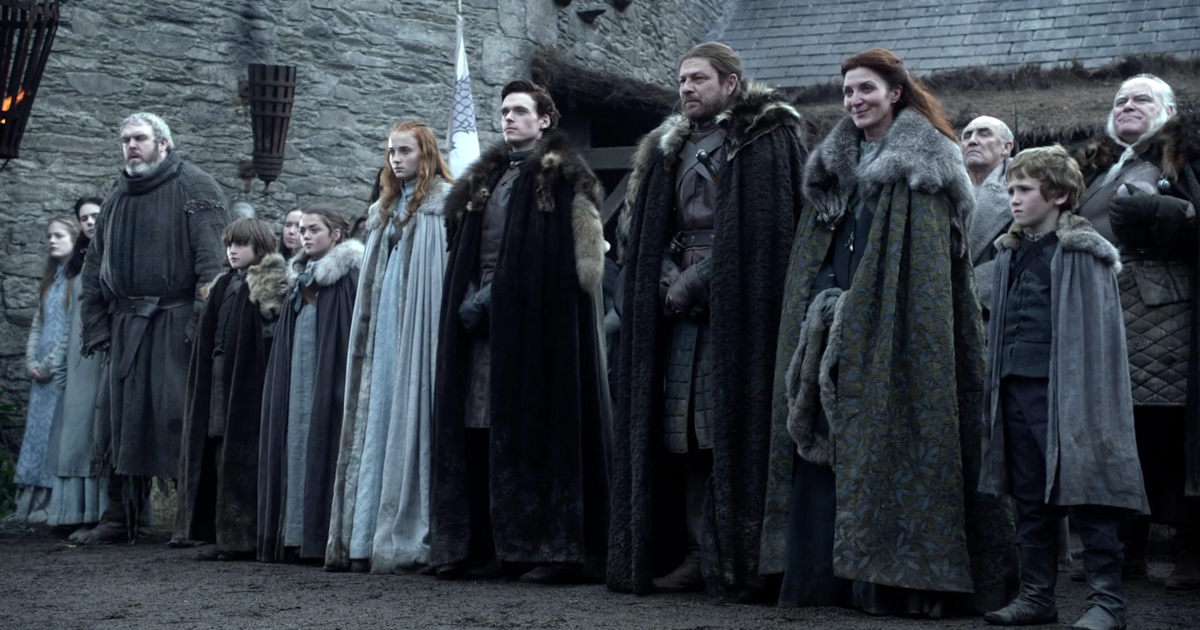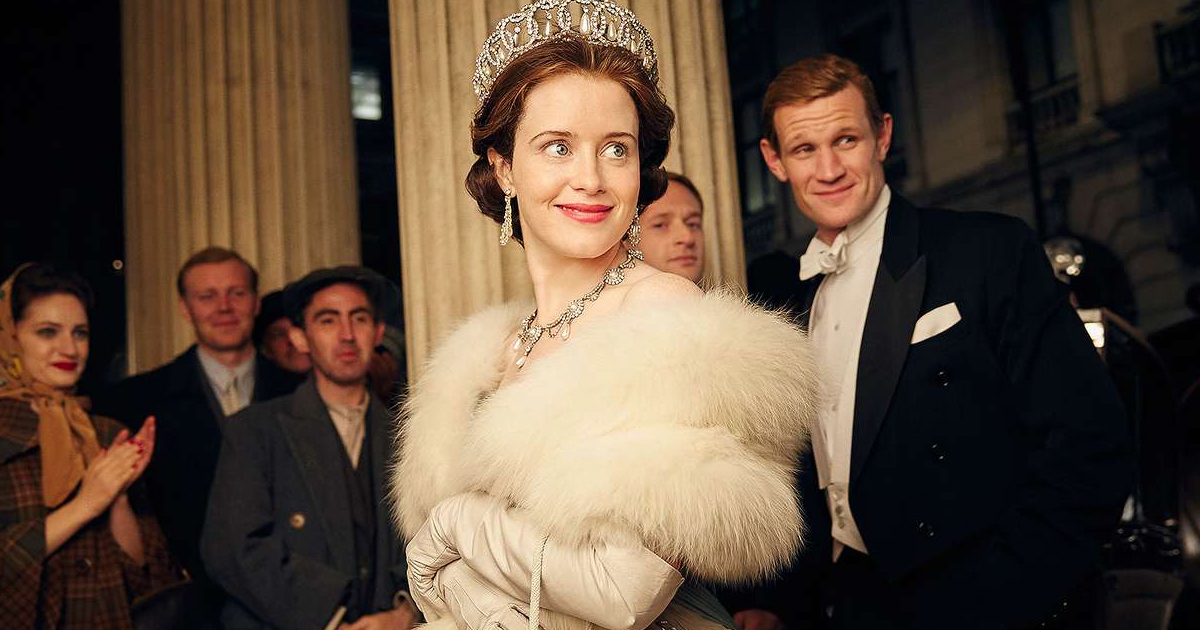Building Bridges
Throughout his life, Bruce Lee practically oozed excellence in everything he did, constantly working to improve himself and those he taught. He began fighting at an early age, but not only against those who physically challenged him, as he also spent much of his time overcoming the differences between Asia and the Western world.
Due to his enduring skill in combat and on-screen, he succeeded in this effort—even if his life came to a sudden and tragic end.

1. He Was Born In America
By the end of Bruce Lee’s career, no one could deny the pride he took in his Chinese heritage. Although he became a beloved actor in Hong Kong, he also evolved into one of Hollywood’s biggest icons, showcasing how he bridged the two worlds together. This duality was present even at his birth, as although his parents were both Chinese, he was born on November 27, 1940, in San Francisco, California.
His family wouldn’t stay there forever, though.
 Unknown authorUnknown author, Wikimedia Commons
Unknown authorUnknown author, Wikimedia Commons
2. They Returned
Bruce’s parents weren’t in San Francisco for too long, since his father was a Cantonese opera singer on an international tour, but Bruce’s birth there still provided him with a US citizenship. Just four months later, though, his parents packed up their things and brought their new baby back to Hong Kong, where his father had based himself as a singer.
Unfortunately, things only got worse from there.
 Unknown authorUnknown author, Wikimedia Commons
Unknown authorUnknown author, Wikimedia Commons
3. They Invaded
Bruce’s family was free to travel back to China, but as WWII was only beginning, what they found was far from “home sweet home”. At the time of Bruce’s birth, Hong Kong had been under British control—a fact which changed not long after his family’s return. Later in 1941, Japan invaded Hong Kong and took it from the British, occupying it until the end of WWII.
Still, it seemed that Bruce remained destined for the screen.
 British Hong Kong journalist or Japanese journalist, Wikimedia Commons
British Hong Kong journalist or Japanese journalist, Wikimedia Commons
4. He Started Acting
Despite the hardships he and his family endured, Bruce’s father, Lee Hoi-chuen, continued his work in Cantonese opera and maintained contacts in the entertainment world. As such, Bruce became exposed to the film world almost immediately, with his first role being in the 1941 film Golden Gate Girl, when he was still a baby.
Of course, he wasn’t the only actor in his family.
 Unknown authorUnknown author, Wikimedia Commons
Unknown authorUnknown author, Wikimedia Commons
5. They Worked Together
For the most part, Bruce’s parents were proud to sit back and watch their son begin his very early career as an actor—but his father also pursued the profession. Therefore, when nine-year-old Bruce landed his first lead role in the comic book film adaptation The Kid in 1950, his father joined him as his co-star.
Soon enough, Bruce found his first identity as an actor.
 Very young Bruce Lee in The Kid (1950), yusochau
Very young Bruce Lee in The Kid (1950), yusochau
6. He Found His Name
When he was still young, Bruce accumulated a fair amount of acting credits and had gotten to the point where he felt justified in choosing a stage name. For inspiration, he looked back to his birth, which occurred during both the year and hour of the dragon. As such, he assumed the stage name, Lee the Little Dragon.
Aside from acting, Bruce started training in other art forms.
 National General Pictures, Wikimedia Commons
National General Pictures, Wikimedia Commons
7. He Learned From Him
Just as with the film industry, Bruce’s parents introduced him to martial arts at a young age, with his father teaching him Tai Chi when he was about seven. Sadly, his father developed an addiction to opium soon after, and Bruce looked for training elsewhere. Thankfully, in 1953, his friend William Cheung introduced him to Ip Man, the legendary martial artist.
However, he then encountered a setback.
8. He Was Denied
Although Bruce was all too eager to learn martial arts, a rule among masters like Ip Man stood in the way. Bruce’s mother, Grace Ho, was half Chinese and half European, possibly German on her father’s side, making Bruce part European himself. This posed a problem, since the teaching of Chinese martial arts to “foreigners” was forbidden.
Fortunately, he wasn’t alone.
 Michael Ochs Archives, Getty Images
Michael Ochs Archives, Getty Images
9. He Spoke Up
While the rule against teaching foreigners had been in place for a long time, and many were staunch advocates of it, Bruce’s friend William wasn’t one of them. Looking out for the boy, William went to Ip Man and spoke in support of Bruce, eventually swaying the master to accept him into his school. Still, this didn’t fix everything.
 Unknown authorUnknown author, Wikimedia Commons
Unknown authorUnknown author, Wikimedia Commons
10. They Shunned Him
Bruce began his dedicated training under Ip Man, who taught him a style of kung fu called Wing Chun, in which Bruce became quite adept. Still, even after a year, the other students wouldn’t let go of their prejudices. As they knew of his ancestry, they refused to work with Bruce, and he had no choice but to continue his schooling with Ip Man in private.
However, he didn’t limit himself to one type of combat.
 Stanley Bielecki Movie Collection, Getty Images
Stanley Bielecki Movie Collection, Getty Images
11. He Studied Other Fighting
Bruce was passionate about learning Wing Chun, but that wasn’t the only style of fighting that occupied his time. For formal education, he attended St Francis Xavier's College, where he joined the school boxing team. Once again, he quickly showed his skill and soon won a Hong Kong boxing tournament in 1958. He also fought in less organized ways.
 Michael Ochs Archives, Getty Images
Michael Ochs Archives, Getty Images
12. They Challenged Him
Despite the disapproval of his parents and the efforts of Ip Man to keep his students away from this sort of thing, Bruce began street fighting early on. Engaging in many of these altercations, one of the worst was in 1958, when he answered a challenge by the boys from a rival martial arts school.
However, for all his skill, he may have lacked restraint.
 Michael Ochs Archives, Getty Images
Michael Ochs Archives, Getty Images
13. He Beat Him
Bruce had already become an excellent fighter, but this 1958 street fight also displayed the aggression he was capable of. During the fight between students of the opposing schools, one of the rival boys pulled an unfair move and punched Bruce, setting him off. Bruce lunged forward and started pummeling him, not stopping until one of the boy’s teeth fell out.
This had bigger repercussions.
 Enter The Dragon (Bruce Lee Vs O'Hara) HD, KAABA
Enter The Dragon (Bruce Lee Vs O'Hara) HD, KAABA
14. She Spoke To Them
Following Bruce’s severe beating of the rival student, the boy’s parents were understandably outraged and went straight to the authorities. As a result, Bruce’s mother went down to the station and spoke to the officers, promising to take full accountability for her son upon his release from their custody.
Still, his mother knew that a change was necessary.
 Michael Ochs Archives, Getty Images
Michael Ochs Archives, Getty Images
15. She Wanted Him To Leave
After Bruce’s mother took responsibility for him, the authorities released him into her care, and she declined to mention the incident to Bruce’s father altogether. Nonetheless, she wanted Bruce to get away from the trouble he was getting into in Hong Kong and urged him to move back to America.
As such, he had little choice.
 ABC Television, restore by BevinKacon, Wikimedia Commons
ABC Television, restore by BevinKacon, Wikimedia Commons
16. He Left
While Bruce’s father didn’t learn about his incident with law enforcement, he agreed with Grace’s assertion that Bruce should go to America for better education opportunities. At his parents’ behest, Bruce left Hong Kong in 1959 and initially stayed with his older sister in San Francisco, who had been living there for a while prior.
In the US, he assumed a bit more leadership.
 Michael Ochs Archives, Getty Images
Michael Ochs Archives, Getty Images
17. He Started Teaching
After a few months in San Francisco, Bruce relocated to Seattle, where he felt confident enough to begin teaching martial arts himself. In the short time since his arrival in the US, he had already made some friends, whom he was happy to take on as his first students. Meanwhile, he constantly worked to improve his style.
18. He Was Interested In Other Sports
Even while taking on the role of teacher in his own version of kung fu, Bruce was still fascinated by other forms of combat, especially boxing. Watching the boxing icons who were active at the time, like Sugar Ray Robinson and Muhammad Ali, he studied their techniques closely. But this wasn't the only thing keeping him sharp.
19. He Went To School
After completing his high school years in Seattle, Bruce enrolled at the University of Washington in 1961 and—drawing on his childhood career—he majored in drama. However, both philosophy and psychology were always passions for him, and he took two classes of each in his time there.
Also during this time, he formed his most significant connection.
20. They Hid Themselves
Bruce may have spent much of his time either studying drama or teaching martial arts, but that didn’t stop him from entering the dating scene as well. While at university, he met Linda Emery, who was studying education. They hit it off and began a relationship, but needed to be careful, seeing as many places in America still outlawed interracial couples.
Before long, he picked up and moved again.
21. He Moved Again
Bruce wouldn’t finish studying at university, and instead chose to drop out in 1964, moving south to Oakland, California. With him came his older friend, James Yimm Lee, who had already gained a great amount of experience as a martial artist. Putting their expertise together, the two of them opened a second martial arts school.
Soon after, Bruce received a special request.
22. He Was Invited
Having decades more experience than Bruce, James had many connections within the fighting world, including martial artist Ed Parker, to whom he introduced Bruce. Recognizing Bruce’s skill, Parker invited him to participate in the upcoming Long Beach International Karate Championship in 1964. Bruce accepted and proceeded to wow the audience there.
But his physical prowess wasn't the only thing that shocked the crowds.
 Ed Parker - Movie and TV clips, Kenpo and Martial Arts Tapes
Ed Parker - Movie and TV clips, Kenpo and Martial Arts Tapes
23. He Had Complaints
At the Long Beach event, Bruce was more than happy to show off some of his more impressive skills, including doing two-finger push-ups and his famous one-inch punch. However, he also seized the chance to air out some of his grievances and called for martial artists to get with the times, while detailing his gripes with several styles.
Naturally, this put him on the radar of those who disagreed.
24. They Ordered Him
Bruce’s actions and opinions brought on the wrath of numerous martial arts masters. According to his account, the issues he dealt with as a child resurfaced, and the Chinese community demanded that he cease any and all teaching of non-Chinese students. However, Bruce remained unconvinced, so a rival teacher, Wong Jack-man, challenged him to a fight.
Therefore, the stakes were set.
25. They Made A Deal
Bruce wasn’t going to accept the demands against him without a fight, and was so confident in his abilities that he agreed to the terms set by Wong. As the ultimatum allegedly stated, if Bruce won the match against Wong, the community would allow him to teach whoever he wanted. However, if he lost, he would have no choice but to shutter his school.
Of course, this wasn’t the only version of events.
 BIRTH OF THE DRAGON | The Legendary Fight, FilmIsNow Action Movies
BIRTH OF THE DRAGON | The Legendary Fight, FilmIsNow Action Movies
26. He Disagreed
Bruce asserted that the match was a response to his teaching non-Chinese students, but Wong adamantly refuted this. According to him, he had no problem with who Bruce taught, but instead challenged him because Bruce had been claiming he could defeat anyone in San Francisco.
In Wong’s words, the fight was a tough one.
 BIRTH OF THE DRAGON | The Legendary Fight, FilmIsNow Action Movies
BIRTH OF THE DRAGON | The Legendary Fight, FilmIsNow Action Movies
27. It Was A Long Fight
As Wong later detailed, his fight with Bruce was nothing like he expected it to be. He assumed his opponent would fight with honor and fairness, but was immediately taken aback at the underhanded techniques and lethal aggression Bruce displayed. As both were skilled fighters, according to Wong, the match lasted abnormally long—being at least 20 minutes.
But this didn’t line up with Bruce’s retelling.
 BIRTH OF THE DRAGON | The Legendary Fight, FilmIsNow Action Movies
BIRTH OF THE DRAGON | The Legendary Fight, FilmIsNow Action Movies
28. They Said Otherwise
Just like how Bruce’s reasoning for the match conflicted with what Wong claimed, the details of the actual fight were different in Bruce’s view. He later stated that, while the two did fight with minimal restrictions or rules, it only lasted about three minutes before Bruce won. Both Bruce’s partner, Linda, and friend James Yimm Lee corroborated this story.
Either way, this event led to the next chapter in Bruce’s life.
 Stanley Bielecki Movie Collection, Getty Images
Stanley Bielecki Movie Collection, Getty Images
29. He Got An Opportunity
Since Bruce had quit his university career, including his drama major, he decided to focus all his energy on martial arts. Still, he held on to his love for acting and got a second chance at it when he appeared at the Long Beach event. The publicity he gained caught the attention of producer William Dozier, who invited Bruce to audition for a TV pilot.
Meanwhile, Bruce and Linda took the next step in their relationship.
30. They Started A Family
Despite Bruce dropping out and moving away, he and Linda stayed together, and she joined him in Oakland, marrying him shortly before the Long Beach event in August 1964. It wouldn’t take long for their family to grow, as they welcomed their son Brandon the following year and their daughter Shannon in 1969.
On the professional side of things, he could finally return to his passion.
 Michael Ochs Archives, Getty Images
Michael Ochs Archives, Getty Images
31. He Joined A Series
Although the series that Bruce initially auditioned for never came to fruition, he soon received his next on-screen opportunity with the 1966 show, The Green Hornet. It followed the titular masked vigilante and his partner Kato, played by Bruce, who was able to use his real-life martial arts expertise as the character.
This truly kicked off his American fame.
32. He Became Popular
Obviously, the film industry wasn’t new to Bruce, but the Western world had yet to see him in any on-screen capacity. Furthermore, The Green Hornet became the first American series to focus on Asian martial arts. As a result of the show’s success, despite only running for one season, Bruce grew more well-known with American audiences.
Of course, this didn’t mean he stopped practicing martial arts off-screen.
 Sunset Boulevard, Getty Images
Sunset Boulevard, Getty Images
33. He Developed His Style
Up until 1967, Bruce had been teaching his own version of Wing Chun, which he called Jun Fan Gung Fu. However, he couldn’t shake the feeling that it was too limiting, and he wanted to create more of a freeform style. The result was Jeet Kune Do, which drew from several different fighting techniques, such as kung fu, boxing, and even fencing.
He also displayed his innovation in television.
34. He Pitched A Show
By the early 1970s, Bruce had worked on numerous TV shows and films in several capacities, but he also had his own ideas for projects. Developing the concept for a series called The Warrior, Bruce pitched the idea to studios like Warner Bros, but he never got to make it. That wasn’t the end of it, though.
 Michael Ochs Archives, Getty Images
Michael Ochs Archives, Getty Images
35. They Took It As Their Own
While each studio Bruce approached with his pitch turned him down, his idea would still find a way on-screen, albeit without his say. In 1972, Warner Bros released a new series titled Kung Fu, which, according to Bruce, was extremely similar to his pitch, with only a few minor alterations. But that wasn't even the worst part.
Despite the obvious similarities, the studio never gave Bruce any credit for it. Finally, he had had enough.
 Kung Fu 1972 - 1975 Opening and Closing Theme, TeeVees Greatest
Kung Fu 1972 - 1975 Opening and Closing Theme, TeeVees Greatest
36. He Left America
Bruce’s first few years of acting in America were bittersweet for him, since he still had a passion for performing, but became unsatisfied with only booking supporting roles. Hoping for better opportunities, he returned to his roots and moved back to Hong Kong, shocked to find that The Green Hornet had turned him into a big star there.
As a result, he got more respect.
 ABC Television, Wikimedia Commons
ABC Television, Wikimedia Commons
37. He Signed On
Back in Hong Kong, audiences fell in love with Bruce’s role as Kato in The Green Hornet, and even came to view him as the main character of the series. As such, it was no wonder that several film studios were eager to make deals with him. Choosing between Golden Harvest and Shaw Brothers Studio, he entered into a two-film contract with the former.
Not only did he get what he wanted, but the consequences were downright glorious.
 Sunset Boulevard, Getty Images
Sunset Boulevard, Getty Images
38. His Fame Grew
Immediately, Golden Harvest set Bruce up with the exact kind of role he was looking for, as the lead character in the 1971 film The Big Boss, as well as in his second film, Fist of Fury. Both turned out to be massive successes in Hong Kong, with each one breaking the previously held box office records.
But this was only the beginning.
39. They Trusted Him
Bruce had done so well with his first two movies for Golden Harvest that the studio decided to sign him on for a third, but this time with a big change. This 1972 film, The Way of the Dragon, not only starred Bruce as the lead but had him writing and directing it, as well as choreographing the fight scenes.
Now in control, he made some more personal decisions.
 Beating a Gang of Thugs - The Way of the Dragon (Return of the Dragon), Binge Society
Beating a Gang of Thugs - The Way of the Dragon (Return of the Dragon), Binge Society
40. He Brought In His Friend
Years prior, when Bruce appeared in the 1964 Long Beach event, he formed a friendship with fellow actor Chuck Norris—himself a karate champion. Then, having full control over his next film with Golden Harvest, he invited Norris to Hong Kong to be in the movie. Norris accepted and appeared in The Way of the Dragon as Bruce’s adversary.
That's when fate threw him a wild curveball.
 The Day Chuck Norris Bested Bruce Lee | The Way of the Dragon | CLIP, Boxoffice Movie Scenes
The Day Chuck Norris Bested Bruce Lee | The Way of the Dragon | CLIP, Boxoffice Movie Scenes
41. He Stopped Filming
Both Bruce and Golden Harvest wanted to keep the party going, so he signed on for a fourth movie, starting production in the fall of 1972. However, all filming halted in October when he finally got another shot with Warner Bros. The studio had partnered with Golden Harvest and Concord Production Inc to make the movie Enter the Dragon, offering it to Bruce.
Unfortunately, he began to experience a physical toll.
 Sunset Boulevard, Getty Images
Sunset Boulevard, Getty Images
42. He Fell Unconscious
Bruce always gave it his all, doing most, if not all, of the writing, directing, and stuntwork, but his body started to fail him. While filming Enter the Dragon, and specifically while recording replacement audio for the film, Bruce suddenly fell to the ground. At the hospital, the doctors diagnosed him with cerebral edema as the cause of his epileptic seizures and headaches.
He soon recovered—but tragedy lay in wait on the horizon.
 Stanley Bielecki Movie Collection, Getty Images
Stanley Bielecki Movie Collection, Getty Images
43. They Were Going To Dinner
Bruce was relatively fine for the next few months and continued to prepare for his next film, which he hoped would feature George Lazenby. To discuss all the details, Bruce and Lazenby planned to have dinner in Hong Kong on July 20, 1973. However, he had a few other stops to make before then.
44. They Met Beforehand
That day, Bruce was seemingly busy with a full schedule, trying to juggle the various projects he was working on. His fourth Golden Harvest film remained incomplete, so in the afternoon, he visited producer Raymond Chow to discuss everything. Following this, Bruce had another meeting, wherein he and Chow went to the home of actress Betty Ting to review the script.
However, something wasn’t right.
 South China Morning Post, Getty Images
South China Morning Post, Getty Images
45. She Went To Check On Him
During the meeting, Bruce complained that his head was hurting. To help him out, Ting provided him with a tablet of Equagesic for the pain. Little did they know, a nightmare was about to unfold. Bruce decided to catch some shut-eye before his dinner with Lazenby. But when he failed to show up for the meeting, his absence raised some serious red flags.
 South China Morning Post, Getty Images
South China Morning Post, Getty Images
46. He Never Woke Up
Though the timeline of the events surrounding Bruce Lee's demise sometimes differs depending on the source, it's often stated that a concerned Raymond Chow returned to Ting's apartment and found him unresponsive. He immediately called for the doctor. However, when the doctor failed to resuscitate Bruce, he sent him to the hospital, where doctors discovered that he had already passed.
This tragedy came out of nowhere—at least at first glance.
 South China Morning Post, Getty Images
South China Morning Post, Getty Images
47. He Determined The Cause
In order to figure out the cause of what, by all accounts, felt like a random, inexplicable tragedy, esteemed pathologist Donald Teare performed the autopsy on Bruce. When all was said and done, he concluded that Bruce had passed from cerebral edema, caused by the negative reaction to the prescription painkiller he had taken.
However, with such a sudden demise, conspiracy theories about Bruce's demise ran rampant.
48. They Pointed Fingers Of Blame
One of the first people to have fingers of blame pointed at them was Betty Ting—the actress Bruce had met with just before his passing. The harasssment she endured was brutal, with some people even threatening to end her life. But this wasn't the only shocking theory about Bruce's death.
 South China Morning Post, Getty Images
South China Morning Post, Getty Images
49. They Called It A Curse
Some theories bordered on the ridiculous, with people wondering whether a gang had assassinated Bruce, or if Chinese organized crime played a part. But that wasn't all. Another theory gained traction around two decades later, when Bruce's own son Brandon tragically passed in a freak accident on the set of the 1993 film, The Crow.
This far-flung theory had folks claiming that both deaths had been caused by a curse. But though some of these ideas were undoubtedly baseless, others were chillingly convincing.
 The Crow (1994) Official Trailer - Brandon Lee Movie HD, Rotten Tomatoes Classic Trailers
The Crow (1994) Official Trailer - Brandon Lee Movie HD, Rotten Tomatoes Classic Trailers
50. He Removed His Sweat Glands
In 2018, a Bruce Lee biography—Bruce Lee, A Life—proposed another shocking explanation for his passing. According to Matthew Polly, he wondered whether Bruce had suffered from heat stroke on that fateful day. After all, the martial artist no longer had sweat glands in his armpits, having chosen to remove them for aesthetic purposes.
With so many questions still being posed, it's no wonder that the cloud of mystery surrounding Bruce Lee's death persists to such a degree.
 Robert Alexander, Getty images
Robert Alexander, Getty images
51. He Still Filmed It
At the time of Bruce’s passing, his fourth Golden Harvest film, Game of Death, had not yet completed production, and Bruce still had scenes to film. However, director Robert Clouse was adamant that the studio not scrap the film, and he decided to finish the project without Bruce. Without the lead actor, Clouse instead used archive footage—and a Bruce Lee lookalike.
The end result was controversial, to say the least.
 Sunset Boulevard, Getty Images
Sunset Boulevard, Getty Images
52. He Was Missing
For what would become Bruce’s posthumous final film, the filmmakers already had over 100 minutes of footage that he had filmed previously. However, much of this was left unused, as Robert Clouse completely reworked the film’s plot. In the end, by the time the movie was released in 1978, it included only 15 minutes of real footage of Bruce.
However, even though he was missing from this film, no one could diminish his legacy.
 Sunset Boulevard, Getty Images
Sunset Boulevard, Getty Images
53. He Changed The World
From struggling to learn and teach Chinese martial arts to trying to break into Hollywood, Bruce Lee literally had to fight his whole life. Thankfully, even though he passed far too early, he reshaped the world around him and made sure it never forgot his name. Today, many in the fields of film and martial arts revere him as one of the most impactful men in either, with Time magazine including him in the 100 most important people of the 20th century.
Lee's legacy will undoubtedly live forever. However, when it came to scandal, he had taken one of his greatest secrets to his grave. Alas, it couldn't stay hidden forever.
 The Big Boss (1971), Golden Harvest Company
The Big Boss (1971), Golden Harvest Company
54. His Mistress Confessed His Secret
In 2006, Betty Ting made a shocking confession during a radio interview. According to her, she and Bruce had been romantically involved before his demise. Ting had been his secret mistress for longer than a year. However, it wasn't until 2013 that she revealed another important detail. On the day Bruce perished, he had not engaged in any physical intimacy with her.
You May Also Like:
The Most Terrifying Man In Hollywood
Jerry Lewis’s Jokes Hid The Truth About His Twisted Life

